 Resolution Bandwidth (RBW)
Resolution Bandwidth (RBW)
The following images represent various signal level examples of the RF spectrum from 80 MHz to 120 MHz.
These signals were captured and analyzed during runtime sessions to demonstrate the importance of selecting the optimal Resolution bandwidth (RBW) from a TSCM perspective.
It is not always necessary to utilize extremely narrow resolution bandwidth settings to achieve and acceptable level of discrimination at the signal display level.
However, it is essential that the technical operator consider the RBW settings based on the threat level and threat technology anticipated.
Resolution Bandwidth (RBW) can affect the noise floor level and must be taken into consideration during deployment.
This information is extracted from the Kestrel TSCM ® Professional Software | Certified Technical Operator (CTO) TM training program.
80 MHz to 120 MHz (5 MHz RBW)
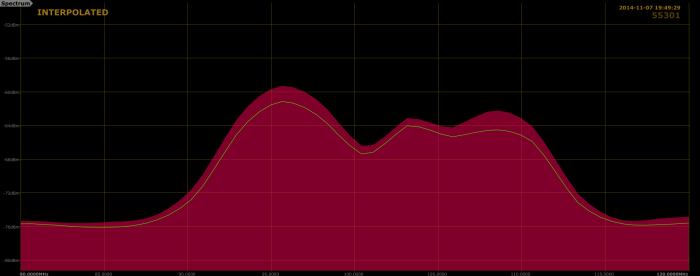
Wide Intermediate Frequency (IF) bandwidth filters of 5 MHz make it impossible to discern the approximately 19 signal events that there present within the IF filter.
80 MHz to 120 MHz (2.5 MHz RBW)

Reducing the IF filter to 2.5 MHz provides the ability to observe what appears to be a number of discrete signal events.
80 MHz to 120 MHz (1.3 MHz RBW)
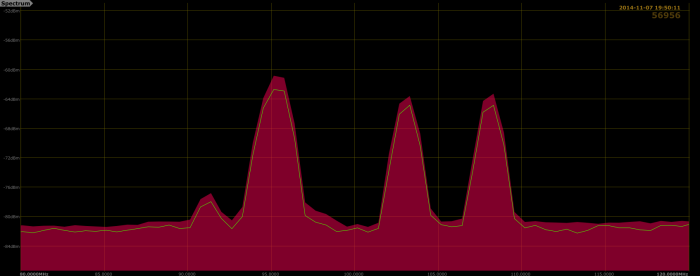
Narrowing the resolution bandwidth to 1.3 MHz reveals yet another potential signal event that was previously hidden within the wider IF filter.
80 MHz to 120 MHz (631 kHz RBW)
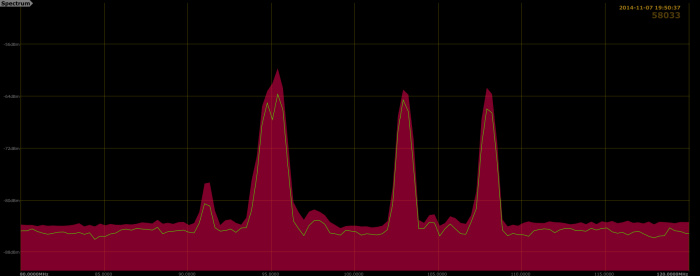
At 631 kHz RBW the ambient noise floor continues to drop and evidence of additional signal events immediately above the ambient noise floor as a result of a narrower RBW and lower noise floor.
80 MHz to 120 MHz (316 kHz RBW)
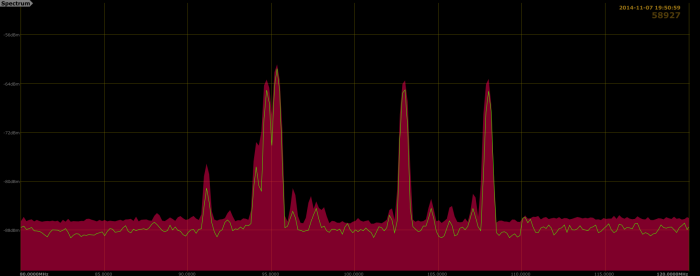
At 316 kHz RBW the technical operator is able to see additional signal events and the ambient noise floor continues to drop.
80 MHz to 120 MHz (157 kHz RBW)
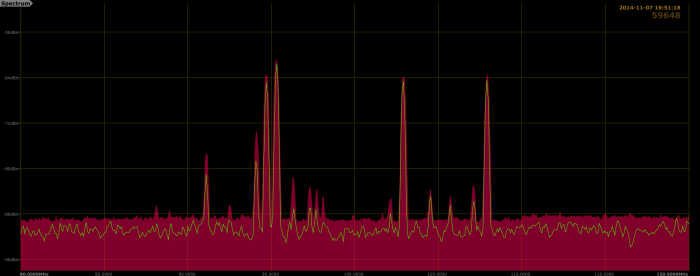
At 157 kHz RBW it is now clear that additional discrete signal events were impossible to see at wider RBW settings.
80 MHz to 120 MHz (79 kHz RBW)
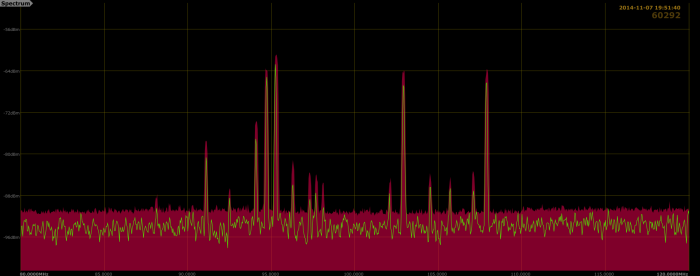
The ambient noise floor continues to drop at 79 kHz RBW and and additional low level signal events are now visible to the technical operator.
80 MHz to 120 MHz (40 kHz RBW)
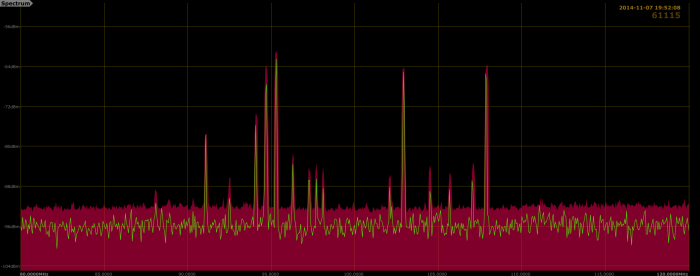
At 40 kHz RBW the ambient noise floor continues to improve the ability to detect and identify the potential significance of signal event low to the ambient noise floor.
80 MHz to 120 MHz (20 kHz RBW)
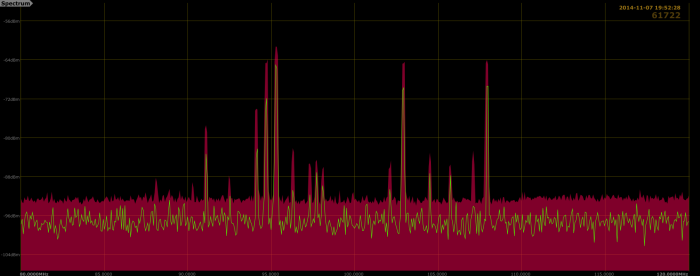
In the above spectrum there is only a small decrease in the ambient noise floor at 20 kHz RBW from the previous 40 kHz RBW settings. However, even a small noise floor improvement can have an impact over time on the detection and identification of potentially hostile signal events.
80 MHz to 120 MHz (9.9 kHz RBW)

At 9.9 kHz RBW there starts to be a trade-off between a faster sweep time and lower ambient noise floor. This is an important consideration and the operator must find the optimal setting consistent with the deployment parameters and detection strategy.
80 MHz to 120 MHz (4.9 kHz RBW)

At 4.9 kHz RBW the operator has achieved a satisfactory noise floor and due to the limited search range of only 40 MHz, the apparent sweep speed will be more than adequate from a Probability of Detection (POD) perspective.
Wide Resolution Bandwidth Selection
| 5 MHz | 2.5 MHz | 1.3 MHz | 631 kHz | 316 kHz | 157 kHz |
Wider RBW settings result in a higher ambient noise floor.
Wider RBW setting make it impossible to see low level signals that are close to the ambient noise floor.
Wider RBW settings result in the inability to discern narrow bandwidth signal events within a wide IF filter.
Wide RBW settings result in an apparent increase in sweep speed.
Narrow Resolution Bandwidth Selection
| 79 kHz | 40 kHz | 20 kHz | 9.9 kHz | 4.9 kHz |
Narrow RBW settings result in lower ambient noise floor.
Narrow RBW settings make it possible to see low level signals that are close to the ambient noise floor.
Narrow RBW settings result in the ability to discern narrow bandwidth signal events within a narrow IF filter.
Narrow RBW settings result in an apparent slower sweep speed.


